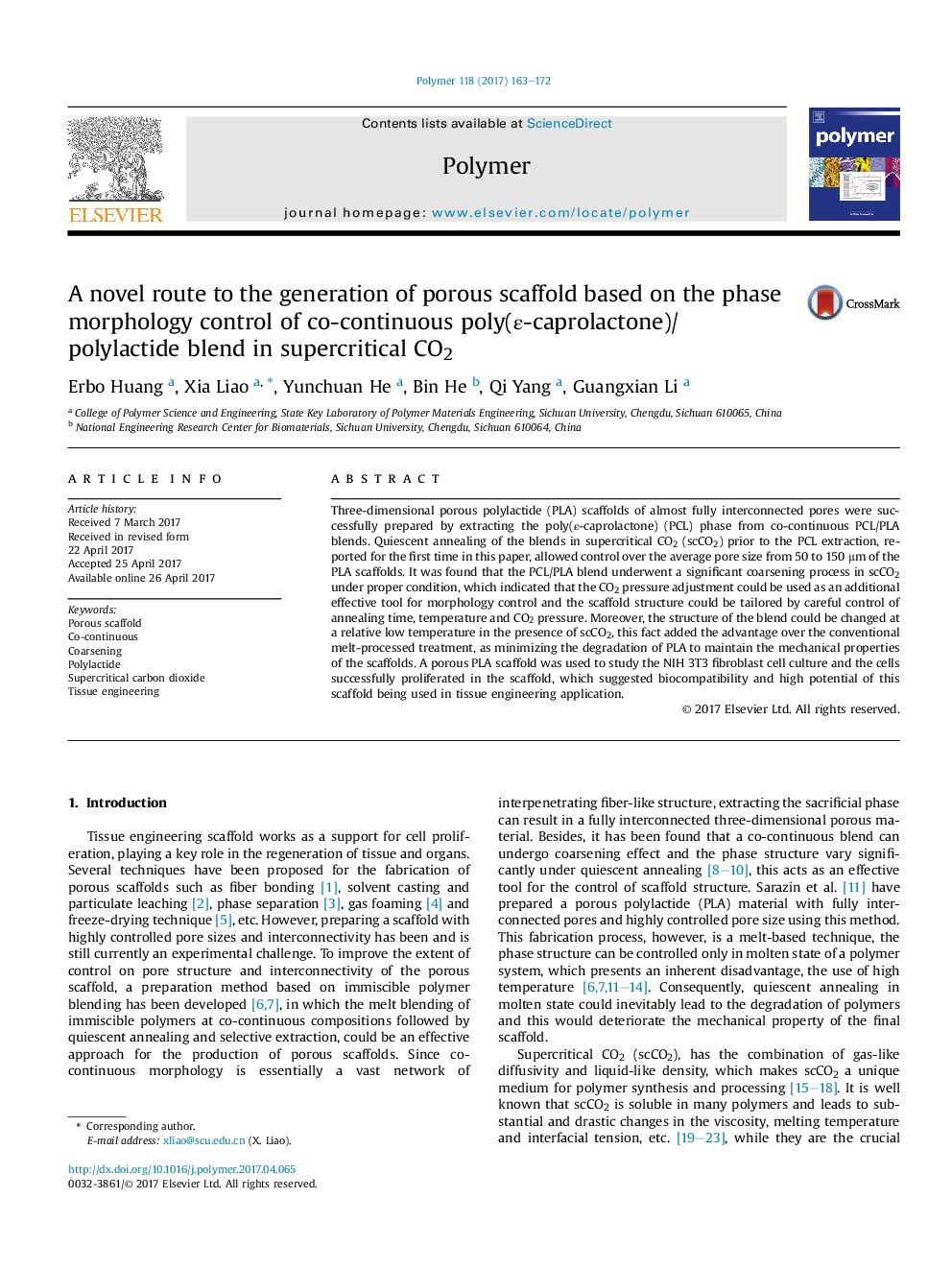| کد مقاله | کد نشریه | سال انتشار | مقاله انگلیسی | نسخه تمام متن |
|---|---|---|---|---|
| 5178052 | 1502488 | 2017 | 10 صفحه PDF | دانلود رایگان |

- Three-dimensional porous PLA scaffolds of almost fully interconnected pores were successfully prepared.
- PCL/PLA blend underwent a significant coarsening process in scCO2 under proper condition.
- The porous scaffold showed good biocompatibility and high potential being used in tissue engineering application.
Three-dimensional porous polylactide (PLA) scaffolds of almost fully interconnected pores were successfully prepared by extracting the poly(ε-caprolactone) (PCL) phase from co-continuous PCL/PLA blends. Quiescent annealing of the blends in supercritical CO2 (scCO2) prior to the PCL extraction, reported for the first time in this paper, allowed control over the average pore size from 50 to 150 μm of the PLA scaffolds. It was found that the PCL/PLA blend underwent a significant coarsening process in scCO2 under proper condition, which indicated that the CO2 pressure adjustment could be used as an additional effective tool for morphology control and the scaffold structure could be tailored by careful control of annealing time, temperature and CO2 pressure. Moreover, the structure of the blend could be changed at a relative low temperature in the presence of scCO2, this fact added the advantage over the conventional melt-processed treatment, as minimizing the degradation of PLA to maintain the mechanical properties of the scaffolds. A porous PLA scaffold was used to study the NIH 3T3 fibroblast cell culture and the cells successfully proliferated in the scaffold, which suggested biocompatibility and high potential of this scaffold being used in tissue engineering application.
A porous scaffold could be obtained from polymer blending followed by quiescent annealing in supercritical CO2 and extraction of the porogen phase, and the scaffold structure could be easily tailored with the assistance of supercritical CO2.352
Journal: Polymer - Volume 118, 2 June 2017, Pages 163-172